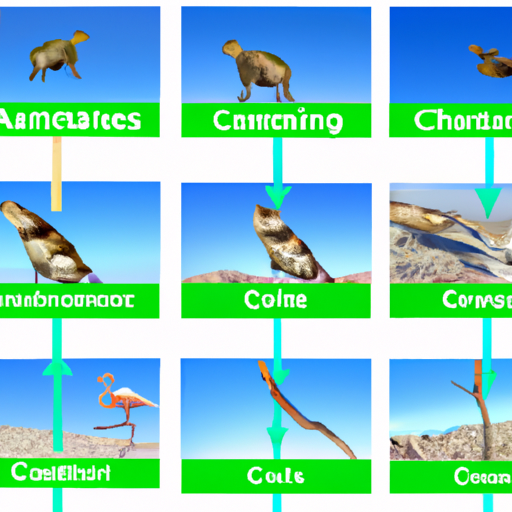 Introduction:
Introduction:
Climate change, caused primarily by human activities, is one of the most significant challenges facing our planet today. As global temperatures rise, extreme weather events become more frequent, and habitats alter, the natural world is forced to adapt rapidly or face the risk of extinction. In this comprehensive article, we delve into the intricate mechanisms of animal adaptation to climate change, exploring the various ways in which species can respond to these unprecedented challenges.
Understanding Animal Adaptation:
Adaptation is an evolutionary process by which species adjust their traits and behaviors to survive and reproduce successfully in changing environments. Animals possess an innate ability to adapt to their surroundings, but the current pace and magnitude of climate change pose unique threats that may exceed their adaptive capabilities. Nonetheless, the natural world exhibits remarkable resilience, and scientists are discovering fascinating patterns of adaptation in response to environmental shifts.
1. Behavioral Adaptation:
Animals employ a range of behavioral strategies to cope with climate change. Migration patterns may shift, altering the timing and destinations of annual journeys. For instance, many bird species are altering their migratory routes to track changing food availability or breeding conditions. Similarly, hibernation periods and reproductive cycles may change to align with altered seasonal cues. Some animals may even modify their feeding or foraging behaviors, exploring new food sources or adapting to scarcity.
2. Physiological Adaptation:
Climate change can exert direct physiological pressures on animals, leading to adaptive changes in their body functions. In response to warming temperatures, some species may undergo phenotypic plasticity, where individuals change their size or shape to better regulate body temperature. For example, studies have shown that certain fish species have increased gill size to cope with warmer waters, enhancing their oxygen uptake capacity. Moreover, genetic adaptations can occur over generations, favoring traits that confer heat tolerance or water conservation abilities.
3. Range Shifts and Habitat Selection:
As habitats become unsuitable due to changing climatic conditions, animals may be forced to relocate to more suitable areas. This migration can be influenced by multiple factors, including temperature, precipitation patterns, and the availability of food and shelter. Some species, such as polar bears and Arctic foxes, have already been observed moving northwards in response to shrinking sea ice. However, range shifts can have cascading effects on ecosystems, potentially leading to altered predator-prey dynamics and disrupting ecological balance.
4. Symbiotic Relationships:
Climate change may also impact the intricate web of symbiotic relationships that exist between animals and other organisms. Mutualistic interactions, where two species benefit from each other’s presence, can be disrupted if the co-adapted partners respond differently to climate change. For instance, as flowering times shift due to warmer springs, pollinators and the plants they rely on may become temporally mismatched, jeopardizing both species. Consequently, symbiotic relationships may need to adapt simultaneously to ensure the survival of the associated species.
5. Evolutionary Changes:
Over longer timescales, climate change can exert evolutionary pressures, leading to genetic changes within populations. Through natural selection, individuals with advantageous traits are more likely to survive and reproduce, passing these traits to future generations. This process can result in the emergence of new species or the evolution of existing ones. However, the rate of climate change may outpace the ability of some species to adapt, leading to increased extinction risks.
Conclusion:
As our planet continues to warm, the ability of animals to adapt to climate change will be crucial for their survival. While some species have demonstrated remarkable resilience and adaptive capacities, others face significant challenges that could threaten their existence. Understanding the nuances of animal adaptation is essential for developing effective conservation strategies and mitigating the impacts of climate change. By reducing greenhouse gas emissions, protecting habitats, and promoting sustainable practices, we can create an environment that facilitates the successful adaptation of the natural world to these unprecedented challenges.
